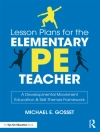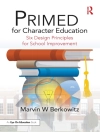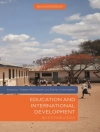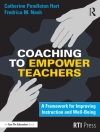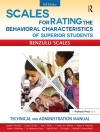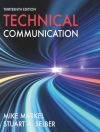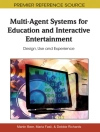Enrich your understanding and application of the Parallel Curriculum Model!
The Parallel Curriculum: A Design to Develop High Potential and Challenge High-Ability Learners remains a groundbreaking publication offering an innovative model for rich curriculum development across varying ability levels. Its four parallel approaches to curriculum development were designed to challenge all students to greater expertise across content areas while helping teachers challenge and develop their own expectations.
The Parallel Curriculum in the Classroom, Book 1 delves more deeply into the classroom application of the Parallel Curriculum Model, providing in-depth examinations of how to:
- Design appropriate curriculum using the Parallel Curriculum Model
- Effectively apply focusing questions when planning for each of the parallels
- Modify the curriculum and classroom environment for students to learn from multiple perspectives
- Extend opportunities with the Curriculum of Identity
- Plan curriculum and instruction using Ascending Intellectual Demand
For teachers, curriculum and instruction directors, staff developers, and administrators, The Parallel Curriculum in the Classroom, Book 1 makes designing and planning with the Parallel Curriculum Model clear. Challenge and reward yourself and your students with this promising new model!
Tabela de Conteúdo
Introducing the Parallel Curriculum Model in the Classroom by Carol Ann Tomlinson and Sandra Kaplan
About the Book
Using the Model and Units for Professional Development
Acknowledgments
1. In Praise of Protocols: Navigating the Design Process Within the Parallel Curriculum Model by Deborah E. Burns
Curriculum as a Road Map
The Purpose, Problems, and Process of Curriculum Writing
The Goal and Sequence of This Essay
The Beginning: Agreeing on the Components of a Curriculum Plan
The Challenge of Writing Well-Aligned PCM Curriculum
Supporting the Work of Creative Professionals
The Parallel Curriculum Model Protocols
Conclusion
2. The Importance of the Focusing Questions in Each of the Curriculum Parallels by Jann H. Leppien
The Nature of a Discipline and How It Relates to the Focusing Questions
Early in the Curriculum Planning Process
Using the Core Curriculum’s Purpose, Characteristics, and Questions to Guide Curricular Decisions
Using the Curriculum of Connections’ Purpose, Characteristics, and Questions to Guide Curricular Decisions
Using the Curriculum of Practice’s Purpose, Characteristics, and Questions to Guide Curricular Decisions
Using the Curriculum of Identity’s Purpose, Characteristics, and Questions to Guide Curricular Decisions
In Closing
3. Using the Four Parallel Curricula as a Comprehensive Curriculum Model: Philosophy and Pragmatism by Sandra N. Kaplan
The Philosophical Rationale
The Pragmatic Rationale
Conclusion
4. Exploring the Curriculum of Identity in the PCM Model by Jeanne Purcell
What Is the Curriculum of Identity?
What’s In It for Me?
Conclusion
References
5. Ascending Intellectual Demand Within and Beyond the Parallel Curriculum Model by Carol Tomlinson, Sandra Kaplan, and Kelly Hedrick
What Is Ascending Intellectual Demand?
How Does Ascending Intellectual Demand Relate to Other Guides for Challenge?
How Is Ascending Intellectual Demand Different Than Other Approaches to Challenge?
Using Ascending Intellectual Demand to Plan Curriculum and Instruction
When and Where Do Teachers Apply Ascending Intellectual Demand?
A Word of Caution
Why Does Ascending Intellectual Demand Matter?
References
Index
Sobre o autor
Cindy A. Strickland has been a teacher for twenty-five years and has worked with students of all ages, from kindergarten to master’s degree. A member of the ASCD Differentiation Faculty Cadre, Cindy works closely with Carol Ann Tomlinson and has coauthored several books and articles with her. In the past eight years, Cindy’s consulting work has taken her to forty-six states, five provinces, and three continents where she has provided workshops on topics relating to differentiation, the Parallel Curriculum Model (PCM), and gifted education. Cindy’s publications include Staff Development Guide for the Parallel Curriculum; The Parallel Curriculum Model, 2nd edition; The Parallel Curriculum Model in the Classroom: Applications Across the Content Areas; and In Search of the Dream: Designing Schools and Classrooms That Work for High Potential Students from Diverse Cultural Backgrounds.Publications in differentiation include Professional Development for Differentiated Instruction: An ASCD Toolkit, Exploring Differentiated Instruction, Tools for High-Quality Differentiated Instruction: An ASCD Toolkit, the ASCD online course Success with Differentiation, the book Differentiation in Practice: A Resource Guide for Differentiating Curriculum, Grades 9–12, and a unit in the book Differentiation in Practice: A Resource Guide for Differentiating Curriculum, Grades 5–9.


